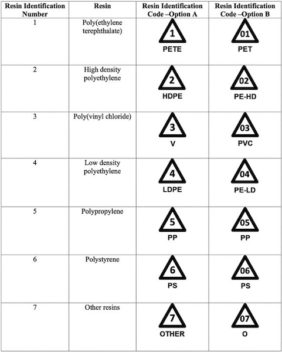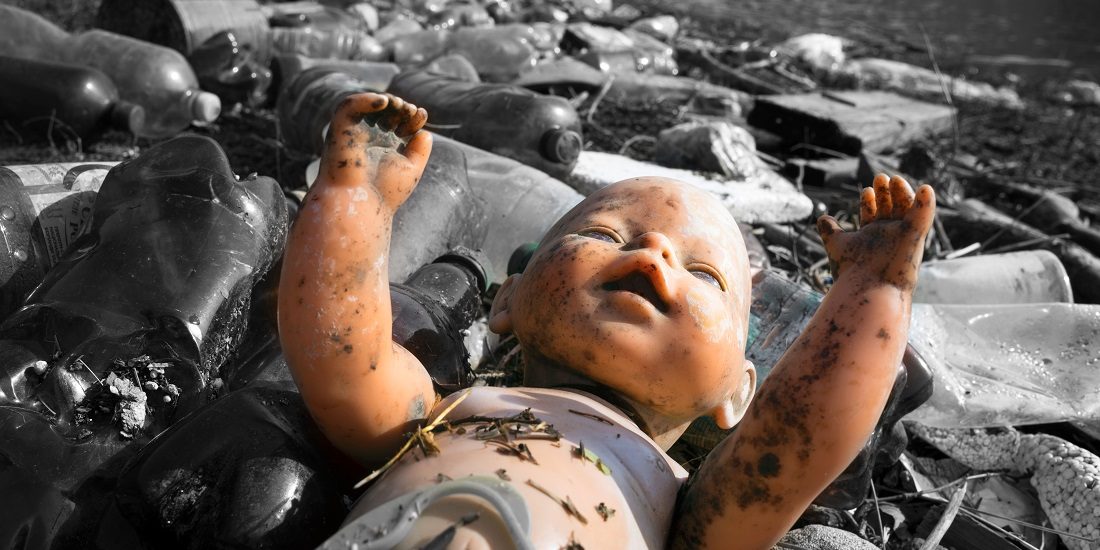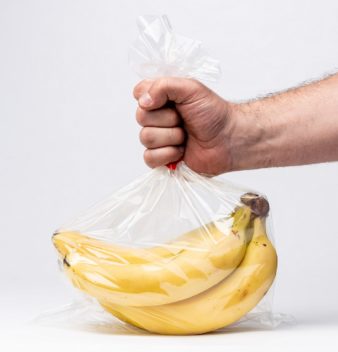It is impossible to know which plastics are dangerous
A recent study found that three out of four plastic consumer products contain harmful chemicals. Bioplastics contained toxicants, too.
A lot of people worry about microplastics and plastic pollution, but not as many of us are aware of the large number of chemicals we encounter in plastic products that we use every day.
Researchers know of more than 4,000 chemicals that are currently used in plastic food packaging. But with more than 5,000 different types of plastic on the market, the number of chemicals used to make plastics is likely even larger.
“The problem is that plastics are made of a complex chemical cocktail, so we often don’t know exactly what substances are in the products we use. For most of the thousands of chemicals, we have no way to tell whether they are safe or not,” says Martin Wagner, a biologist at the Norwegian University of Science and Technology (NTNU). “This is because, practically speaking, it’s impossible to trace all of these compounds. And manufacturers may or may not know the ingredients of their products, but even if they know, they are not required to disclose this information.”
Wagner specializes in the environmental and health impacts of plastics, and is the senior author of a new study on the toxicity and chemical composition in various plastic products.
The work is part of the PlastX research group led by ISOE – the Institute for Social-Ecological Research Frankfurt and was carried out in collaboration with the Goethe University in Frankfurt am Main, Germany. The article was recently published in Environmental Science and Technology.
- You may also like: Capturing false hormones
Adverse effects in three out of four plastics
“We studied eight types of plastics commonly used to make everyday products, such as yogurt cups and bath sponges, and examined their toxicity and chemical composition. Three out of four products contained toxic chemicals,” Lisa Zimmermann, Wagner’s colleague and first author of the study, says.
The researchers used cell cultures to investigate the effects of the mix of chemicals in each product. They found that many plastics contain chemicals that induced general toxicity (six out of ten products), oxidative stress (four out of ten) and endocrine-disrupting effects (three out of ten).
It is impossible to pinpoint specifically which chemicals were the culprits: the research group discovered more than 1,400 substances in plastics but identified only 260 of them. That means that most of the plastic chemicals remain unknown and cannot be assessed for their safety.
Given that, the authors were able to conclude that plastic chemicals in polyvinyl chloride (PVC) and polyurethane (PUR) were the most toxic. Compared to PVC and PUR, polyethylene terephthalate (PET) and high-density polyethylene (HDPE) were less toxic.
“Plastics contain chemicals that trigger negative effects in a culture dish. Even though we do not know whether this will affect our health, such chemicals simply shouldn’t be in plastics in the first place,” Wagner says.
‘Bioplastics’ not safer
Traditionally, plastics consist of polymers and as a rule, are made from petroleum products. Now “green” alternatives to regular plastic can be found as well.
Bioplastics are made from renewable biomass sources, such as plants, instead of from petroleum. But they are still plastic – the polymers that make up the plastic just come from another source.
“Regarding toxicity,” Wagner says, “it’s the same problem. We are in the dark as to which chemicals are used in the bioplastics as well.”
The PlastX team also investigated products made of polylactic acid (PLA), a common type of bioplastic. They found toxicity in all of them.
- You may also like: Plastic in rivers and lakes a growing concern
What you can do
Even plastic products that seem similar may contain different substances.
“We examined four different yogurt cups and found toxicity in two of them, but not in the other two,” Zimmermann says.
In other words, it is almost impossible for consumers to know whether a product is safe or not. This sounds discouraging but there is something you can do.
The PlastX researchers suggest:
- Refuse buying unnecessary plastics and reduce your plastics exposure and footprint, for example, by buying fresh and unpackaged products.
- Avoid PVC products when possible, which are labelled #3 in the recycling code, and all “other types of plastic” labelled as #7 (see figure) because it is not clear which material they are made from.
- Consumers can and should demand safer plastics. One way is to ask retailers for transparency regarding what materials a product is made of and which chemicals are in the product. Ask retailers: Which chemicals are in there? How do you make sure these are safe?”

Try to avoid PVC, which is labelled as #3 plastic in the recycling code, and all products labelled as #7 plastic, which are “other types of plastic”. Illustration: Teleman84, Wikimedia Commons
Big players have influence
Ultimately, Wagner says, it is the responsibility of manufacturers and retailers to improve the chemical safety of their products.
“We found that there was at least one product that was far less toxic than others made from the same material, Wagner says. “This is encouraging because it shows that safer plastics are already on the market.”
That means manufacturers could conceivably make plastics that do not contain toxic chemicals. Wagner says that big retail chains and brand owners have the power to make that happen. However, at this stage, transparency regarding the chemical composition remains an issue that must be resolved.
Wagner calls on policymakers to consider the safety of plastics to which the public is exposed to regularly a priority. “We need to avoid demonizing plastics. But given that we live in the plastic age, we need to make sure they don’t affect our health,” he argues.
This requires taking action, from consumer choices in the supermarket to the international level.
The study was conducted as part of the transdisciplinary research project PlastX (Plastics as Systemic Risk for Social-Ecological Supply Systems) which is led by Dr. Johanna Kramm and Dr. Carolin Völker at the ISOE – Institute for Social-Ecological Research in Frankfurt am Main, Germany. The project is funded by the German Federal Ministry of Education and Research (Project 01UU1603).
Source: Environmental Science and Technology. Benchmarking the in vitro toxicity and chemical composition of plastic consumer products. Lisa Zimmermann, Georg Dierkes, Thomas A. Ternes, Carolin Völker, Martin Wagner.






